
Costing and costing systems are a critical part of a business. An understanding of what something is going to cost to build and run is critical for effective decision making.
As an executive or board member, can you sign off on IT project cost figures with confidence?
Do you have an understanding of effort, time and risk associated with the project?
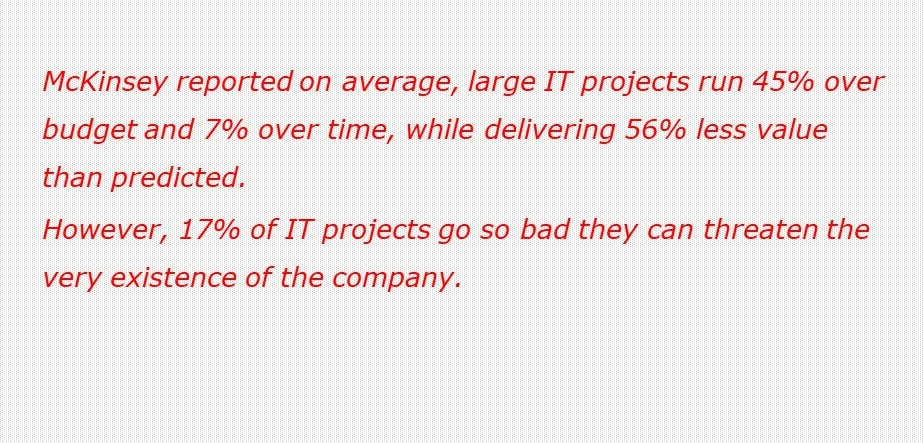
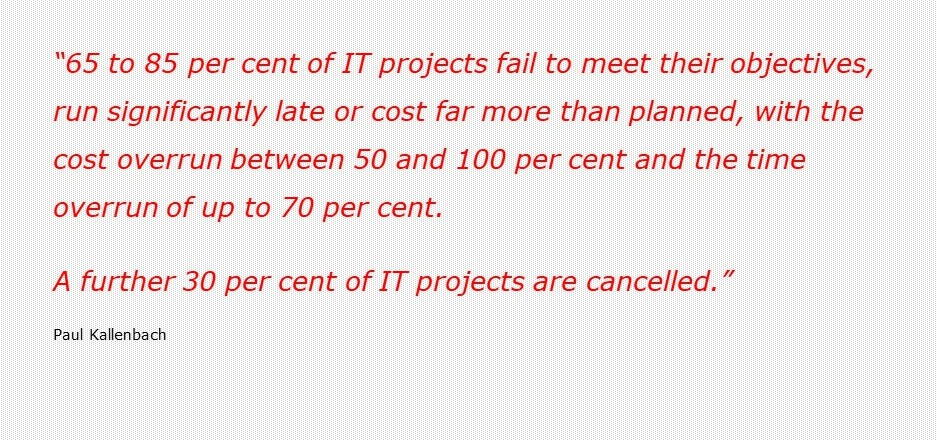
Two different views but both showing a worrying trend with regard to IT projects around the world.
Government IT spending in Australia is forecast to exceed $15.5 billion in 2022, an increase of 8.8 percent from 2021, according to the latest forecast by analyst firm Gartner. Just like their private sector counterparts, Australian public sector organisations are likely to see 30 to 40 per cent of their planned cloud spend – in the order of $300,000 to $1 million per month for larger departments – be wasted.
Typically, tax payer funded IT project failures make the news headlines, but large companies also have a very poor track record of delivering IT projects on time and on budget. Program Directors, Program Managers an Project Managers have become accomplished at taking stakeholders on the journey of reducing scope to meet the remaining budget. While the latest silver bullet is Agile and Digital Transformation, they do little to improve accurately costing IT projects.
A good cost estimate (not a commitment) should have the following characteristics. It should be:
- Accurate
- Comprehensive
- Replicable
- Auditable
- Traceable
- Credible
- Timely
As an executive or board member, can you sign off on your organisation’s estimates with confidence?
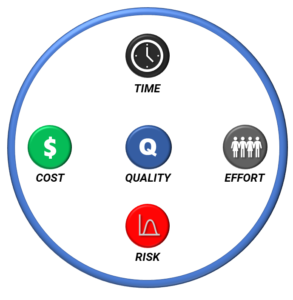
While all the items listed are important, the issue of Time is paramount. IT projects typically start with a conversation – “How much do you think it will cost to add name and address fields to our website?” At this point, there are no detailed requirements and a “guestimate” should not be given. Even the very best estimates will be a range. As more information becomes available, the estimate can become more accurate BUT the budget has usually been set by that time.
PRINCE2 and PMBOK focus on delivering the project to the timeline and budget, but there is no step in there to validate that the budget is realistic for the scope and planned duration.
Through years of outsourcing, organisations have lost the ability to cost IT projects and rely on Requests for Proposals to get an understanding of likely costs. Of course, the real problem is that suppliers will “low ball” their bids to win the business. This leads to constant change requests to vary the scope and value leakage. From our experience, it is not unusual to have 30% value leakage in outsourcing contracts.
While cloud is the new silver bullet, if not well managed, it will cost a lot more than in-house services.

While consulting on a very large deal in 2001, it became apparent that suppliers generally don’t have a good understanding of their operational costs. This led to a focus on cost estimation and a journey to understand IT cost estimation and the tools that are available.
Over the past 20 years, we have looked at a number of organisation’s costing tools. The first thing that became apparent is that they were all MS-Excel based and were “tweaked” based on the project at hand – a very dangerous practice. The second thing was that different parts of the same organisation will use different cost modelling tools for the same scope.
There is no formal training or accreditation for IT cost modelling. What seems to happen is that someone will build an Excel model and become the de facto “expert” in the area.
Galorath Incorporated defines three tribes of cost estimators:
The Napkins: Ad-hoc, hero driven group of estimators whose past successes are legendary and whose napkin scribbling is taken as gospel.
The Guts: Feeling and experience oriented group of project managers and workers whose years of experience,good and bad, makes them trusted prognosticators of what will happen regardless of the actual results (tenure benefits of being a survivor).
The Spreadsheets: Former and current Napkins and Guts members who believe translating their tribal knowledge onto MS-Excel spreadsheets bestows mathematical accuracy and empirical integrity on home grown algorithms.
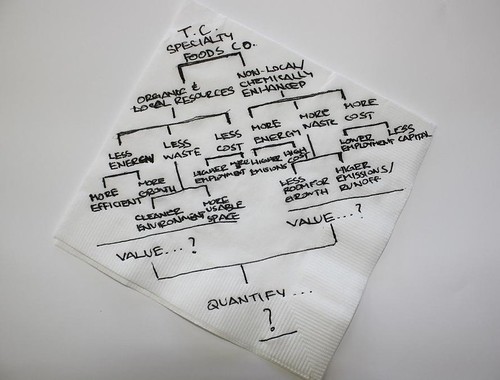
So why is cost estimation so difficult?
IT projects cover a broad spectrum of technologies and activities:
- Regulatory changes and compliance
- Replacing obsolete hardware and software
- Business changes
- Process changes
- Different user interfaces
- APIs
- Software licensing
“The bigger the project, the more risk for potential problems. “It’s usually a misalignment of expectations on the customer side and on the capability of the service provider.”
Damien Bailey
Unfortunately, the estimation process is often subjective and not repeatable. The person creating estimates is usually an IT generalist and does not have a good understanding of the complexities and risks associated with the various cost model elements.
Over time the models become more complex and job security is ensured as none of the models are documented.
The models generally focus on the “run” or operational costs associated with IT infrastructure and typically ignore things like documentation, training and Service Desk skills required for the new project.
One of the other challenges that faces IT projects is the quality and age of the underlying applications and infrastructure. There comes a point where it is less expensive to retire and application than to fix it or add required additional functionality.
Software development
Software development estimates are generally based on “expert judgement”. For anyone interested in this, we would highly recommend the book “Software Estimation – Demystifying the Black Art” by Steve McConnell. One of the more interesting items in the book is the fact that an accurate cost estimate cannot be delivered until sufficient data is available – the Cone of Uncertainty.
CAST Imaging allows your software teams to:
- Automatically discover and see the application architecture
- Quickly navigate all components and their dependencies
- Respond faster to business needs – from small changes to modernization
- Increase cross-team collaboration and efficiency
- Speed up knowledge transfer to newcomers
- Keep a living knowledgebase of the application’s inner workings
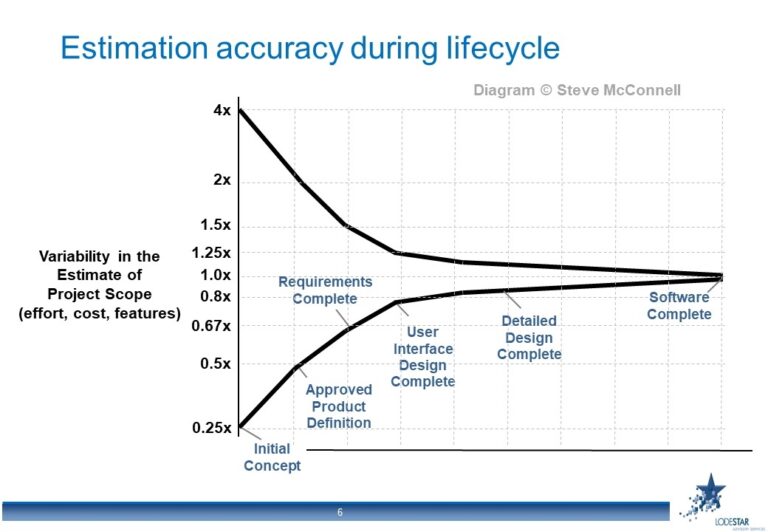
Tools
In 2010, a supplier asked us to do a post implementation review of a major bid. We quickly came to the conclusion that they struggled with detailed costing. A worldwide search was then undertaken for cost estimation tools and we became the Australian resellers of the SEER suite of products from Galorath Inc. Given our background, we focus primarily on SEER for IT and SEER for Software.
With the challenges of analysing workloads that can be moved to the cloud, we once again went looking for tools and found CAST Highlight, an amazing tool that takes all the human factor out of software analysis. When coupled with SEER for Software, very accurate estimates can be produced to reflect the time and effort to remediate code in preparation for cloud migration.
While the tools are very good, the process is critical to improved cost estimation efficiency.
Galorath Incorporated
CAST Highlight
The Galorath SEER suite provides the capability to do rough-order-of-magnitude cost models in minutes. As more data becomes available, the models can be refined.
The knowledge bases that come with the product capture typical metrics associated with those project and run activities based common platforms e.g. cloud, ERP, communications etc.
58% of developers’ time is spent searching and
understanding existing code and architecture.
CAST Imaging allows teams to:
- Learn application make-up in days vs weeks
- Understand end-to-end flows in minutes vs hours
- Comprehend app-to-app dependencies in hours vs days
Cost estimation maturity
As with software development, organisations can be at different levels of cost estimation proficiency.
Very few organisations have implemented a dedicated cost estimation centre (CEC) with the sole purpose of providing IT costings. The CEC supports the CIO and IT to estimate costs for IT projects but can also support Procurement to do an internal costing for an IT project before going to market. This ensures that the stakeholder community are aware of the magnitude of the problem before engaging with the market. Many times we have seen customers having an expectation that a project will cost say $3 million and when they go to market it comes back with a price of $5 million. Unfortunately, what usually happens at that point is to see what can be achieved for $3 million…
The CEC can identify high risk projects as well as projects that have a limited return on investment. Thresholds can be set and these projects can be further reviewed for their viability and benefit to the organisation. A large US government department has implemented this approach and claims to be saving approximately $1 billion per annum by not initiating projects that have a low probability of success.
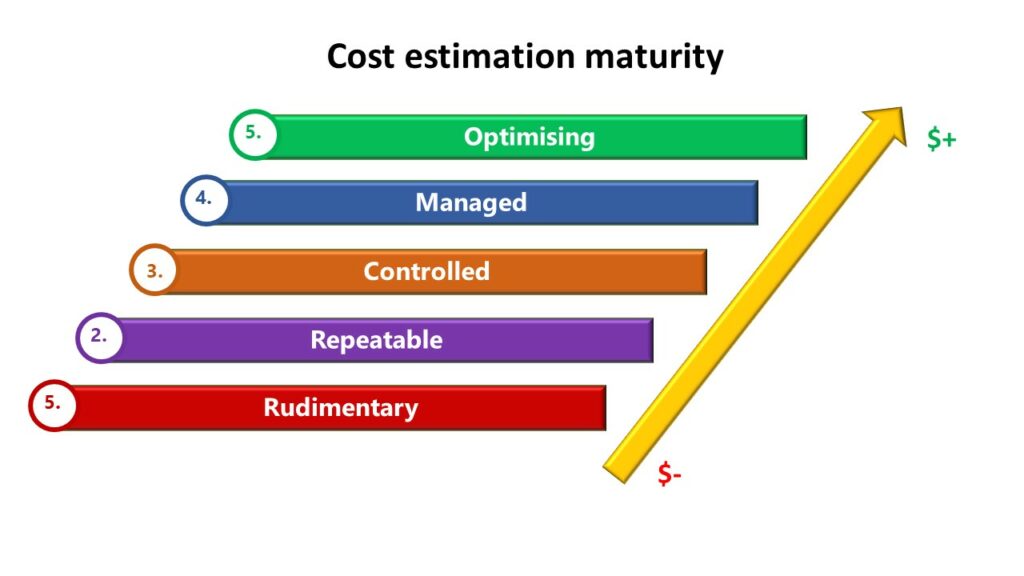
Our Services
IT Cost Estimation
Cloud Migration
Value Leakage
- Review current costing tools and methods
- Develop plan to improve processes and tools
- Ensure cost models are archived to review post implementation
- Deploy SEER tools if selected
- Implement CEC processes and templates
- Review applicability of CAST tools
- Work with programmers to define approach for source code and surveys
- Run CAST
- Review output and use as input for SEER for Software
- Develop cost estimate for remediation
- Review contract
- Review operational reports
- Interview CIO and Contract Manager
- Identify gaps in service and/or deliverables
- Cost gaps and prepare report
- Renegotiate contract terms
- Deliver Contract Management class



